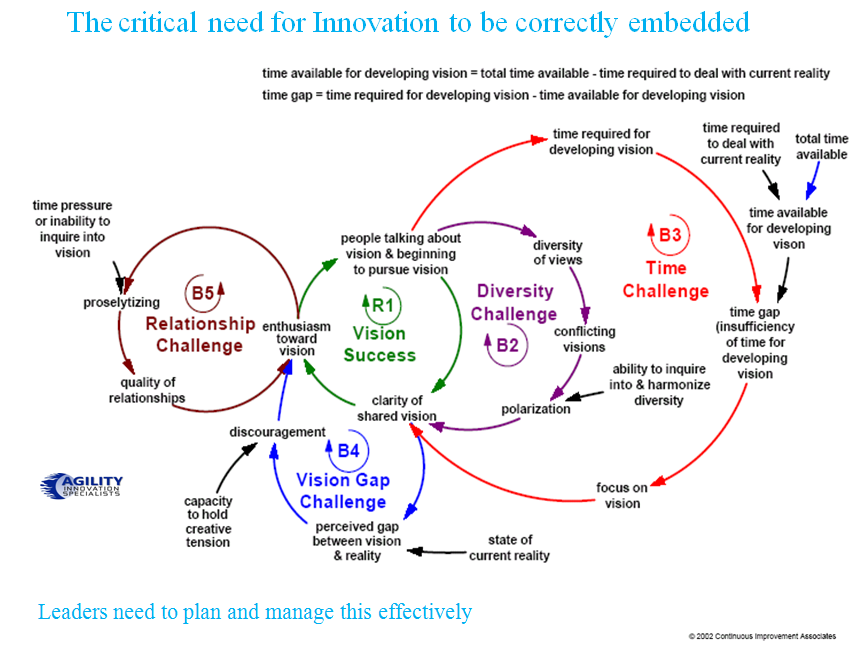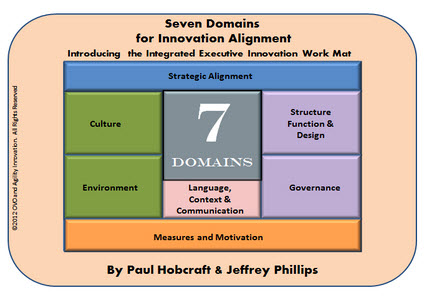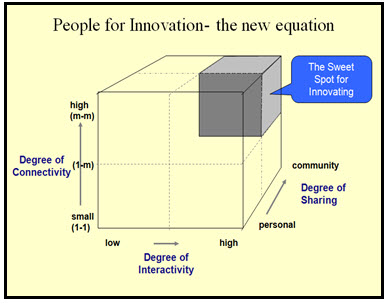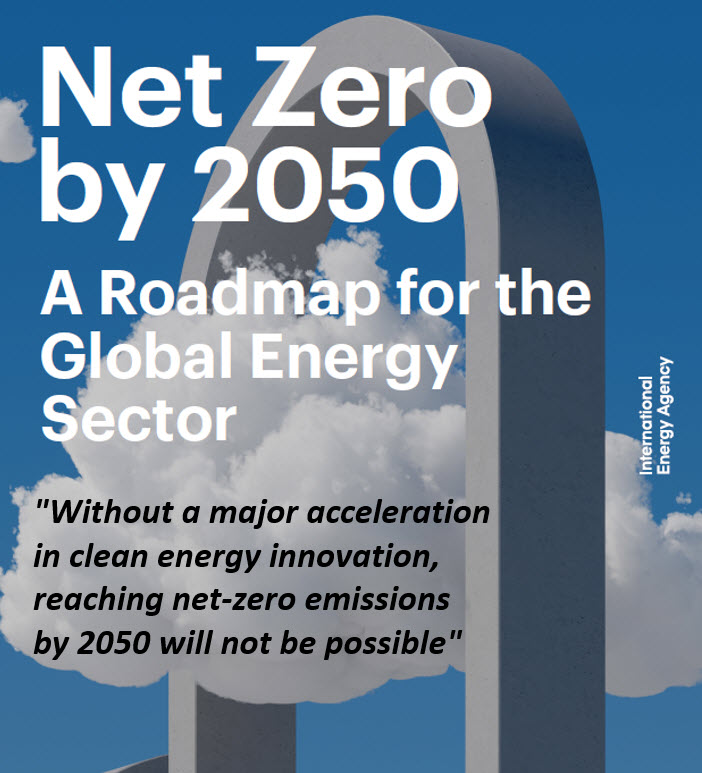
“Without a major acceleration in clean energy innovation, reaching net-zero emissions by 2050 will not be possible.”
A groundbreaking report, “Net-Zero by 2050: a roadmap for the global energy system“(referred to as NZE here) by the Internation Energy Agency (IEA), has been emphasising that this decade is pivotal to reaching net-zero by mid-century.
This 2050 target is in line with the 2015 Paris Agreement, the foundations of global consensus to limit the rise in global temperature to 1.5c. This requires nothing short of a total transformation of the energy systems.
The report is the world’s first comprehensive study of how to transition to a net-zero energy system by 2050 while ensuring stable and affordable energy supplies, providing universal energy access, and enabling robust economic growth.
The report sets out a cost-effective and economically productive pathway, resulting in a clean, dynamic and resilient energy economy dominated by renewables like solar and wind instead of fossil fuels. The report also examines key uncertainties, such as the roles of bioenergy, carbon capture and behavioural changes in reaching net zero.
The role of innovation has a crucial one to play.
In the near term, the report describes a net-zero pathway that requires the immediate and massive deployment of all available clean and efficient energy technologies, combined with a major global push to accelerate innovation. Continue reading “Accelerating Clean Energy Innovation”
Category: Achieving innovation engagement
One great visual paints a thousand innovating words
One great visual paints a thousand words
This visual I came across some years back, and for me, is outstanding in providing the feedback loops that go into developing the right innovation vision. To get to a definitive endpoint of having an innovation vision, you are faced with some complex challenges. These are well shown here.
Each influences the other and constantly loop back, making an improving vision success hopefully.
The different challenges seen in this terrific depiction provide the sort of dialogue and efforts that needs to go into ‘crafting’ the innovation vision. It is hard, thoughtful work. Let’s look at each of these a little more.
The Time Challenge
Continue reading “One great visual paints a thousand innovating words”
Five Bold Steps suggested for the American Innovation Agenda
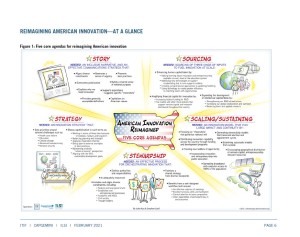
I have been reading a report written by Stephen J Ezell of the Information Technology and Innovation Foundation (ITIF) along with a guru of innovation, John Kao, of ILSi on their concerns that something is amiss with the U.S. innovation system.
The report “Five Bold Steps Towards a Reimagined American Innovation Agenda“, written in February 2021, argues for embracing these five bold steps of story, stewardship, strategy, scaling, and system reimagine innovation for the decade ahead.
In all honesty, it is a little underwhelming, not just the bold but simple five steps but the short document of five pages. It assumes a position, and that is dangerous.
Their argument regarding innovation is that Americans have come to see U.S. leadership as a birthright, as a matter of course. In my view, they lost the leadership mantle for innovation years back. I totally agree it should and needs to come back as a bedrock of future growth, prosperity and dramatically altering today’s landscape. Continue reading “Five Bold Steps suggested for the American Innovation Agenda”
Human-centred innovation in a digital world.
![]()
Today we are facing many current disruptions where we need to react fast and intelligently. There are many situations we are facing that are a race against time. As we continue to respond to Covid-19, technology has the power to reduce the complexity often faced, speed up and contribute to solutions that help resolve pressing issues.
We recognize that equally as important as the technology are the people using the technology. Having people at the centre of designs enables more intelligent, rapid and lasting innovation. The Digital Twin is where data from the physical and virtual world come together and is increasingly where people and technology come together to resolve many of today’s challenges.
Applying human-centred innovation
Continue reading “Human-centred innovation in a digital world.”
The Critically Important Innovation Narrative
![]()
Whatever we do, we do far better when we become emotionally connected. Often understanding a good story builds this emotional connection or simply puts you off. Stories can inspire and spark even greater ideas. The art of storytelling and making connections with the listener or reader has incredible value. Yet, a story has limited value. For me, it is the more powerful narrative that drives innovation, inspiring and gaining identification in multiple ways.
A story is linked to a series of events that take a character from one state to another. In contrast, a narrative is a system of stories that links values and events to establish a broader and often new cultural meaning.
Let’s draw down on so much of John Hagel’s work on narratives. It has shaped my thinking. Continue reading “The Critically Important Innovation Narrative”
Going beyond the known of today

There are so many places where innovation is essential within the Energy Transition due to the magnitude, size, and complexity of the change needed to achieve a decarbonized world. There is a world of innovative possibilities.
One of the most important catalysts for changing the energy system into a sustainable green one is by taking our thinking beyond the known into the possibilities we need for a sustainable future of energy based on the ability for renewables to generate all our electrification needs.
We need to build out all our renewable possibilities that include solar, wind, hydro, green hydrogen and nuclear energy.
In this combination of pursuit, nurturing, and expanding our thinking through the thoughtful construction of a vision built on knowledge, exploration and understanding, we can mobilize the changes needed.
My energy journey is being navigated across the three-time horizons. Continue reading “Going beyond the known of today”
Leadership Alignment Work Mat for making Innovation fully connected.
I believe the value of working the seven domains of this framework, named the Leadership Alignment Workmat has significant value within and across any organization. It brings innovation together, a unifying point for the activity and momentum of innovation to become central to the core of the business in its future investment and value impact.
The Leadership Alignment Workmat provides a unique examination of the executive’s role in innovation; it offers a framework that the organisation’s leadership can adopt to ensure linkages and synergies between strategy and innovation, innovation and capabilities, innovation and culture.
They often lack the communicating medium to help clarify and shape the innovation story to provide the guidance necessary for achieving that essential engagement and encouragement they would like to align organizational efforts required from innovation to the strategies envisioned.
Benefits of applying the Leadership Alignment Work Mat
From an investment in an executive work mat exercise, you receive four significant benefits. Continue reading “Leadership Alignment Work Mat for making Innovation fully connected.”
Mapping Out Your Innovating Way Forward

Mapping any innovation journey can be complicated. There is a fairly detailed journey needed to be undertaken for mapping out your future direction of innovation.
Let’s get straight into it and the process and sequence needed within any innovation journey.
Firstly you have to work through the Strategic Needs– this needs to cover the type of approaches, the scope and intent, the assessments of the required impact for the end customer and organizational value, the understanding and outlines of this becoming organizational-wide in its integrated needs.
This approach does need a systematic approach, continuous up-dated toolboxes and visible metrics and tracking. Lastly, to build and quickly test, adopt and scale as knowledge and understanding are gained.
Second, there is the need to build reference points for future innovation activities, so duplication and learning can be built into understanding. Here it is vital to have gained the continued support and engagement of high-level participation, where we recommend the Leadership Alignment work Mat approach, Continue reading “Mapping Out Your Innovating Way Forward”
Designing unique innovation workshops is hard work
Finding opportunities for Innovation and Growth is hard work.
It is the value of having good, interactive, highly participative workshops that breaks much of those initial barriers to allow the hard work to begin more cohesively and collaboratively.
I believe any workshops design must meet your needs, push the thinking, and generate new returns in innovation understanding.
Boilerplate designs might look initially attractive, but knowing your needs, limitations, concerns, and ambitions can transform a workshop into one that lasts in the participant’s minds. They felt it was “clearly” designed for them.
Which end of the innovation spectrum do we need to go to?
- Workshops can mean different things to different people. Find ones that are 100% focused on engaging with and accelerating innovation. They need a couple of simple rules.
- Conducting ‘open’ dialogues or focused conversations should always have a sound context, so the contributions slowly build-out and hold real promise.
- Discoveries can start with different ‘fields of enquiry’ to achieve different connections and deepen our perspectives.
A great book, written by Bill Sharpe, explaining the Three Horizons often comes to mind. I wrote about it here “Three Horizons- fields of future, full of foresight.”
Then I find the Divergent / Convergent approach in thinking as highly valuable.
We need to always challenge ourselves, and taking you through a set of lenses of discovery that go from ‘divergent to convergent‘ is important. Continue reading “Designing unique innovation workshops is hard work”
Building competence and capacity to expand capabilities for innovation
For innovation to be successful, the bottom line is the commitment and focus made for building the capabilities and competencies in innovation.
It is recognition that people make us the real value and ARE the innovation success equation in my opinion
So we must simply invest in them by focusing on the 3 C’s of developing people, these are Capabilities, Competency and Capability.
As we set about building and expanding capabilities, we need to consider:
- How we can accelerate the uptake of innovation activity around the conditions provided through investing in them
- The need to trigger engagement and achieve growing attainment of knowledge acquisition and dispersion skills- essential for collaborative innovation
- Setting about building practices for greater synergies, relationships and networking conditions, for ongoing learning and absorptive capacity
- Extracting the right cultural, design, climate and environmental conditions,
- Placing increasing value on evolving the structures, processes and technology application
- Investing in lessons learnt through validation and resolutions to challenges to build an ongoing adaptive capacity.
- Recognizing people solve the critical bottlenecks and find solutions to overcome the constraints, they become increasingly motivated to find solutions and resolve gaps through their ability to be creative and inquisitive.
- The ongoing building of capabilities and competencies clearly leads to a more sustaining and determined innovation future.
Increasing capacity through coaching
There are many benefits from having an intense course of one-on-one coaching, irrespective of the level of responsibility you have for innovation within your organization. Continue reading “Building competence and capacity to expand capabilities for innovation”
